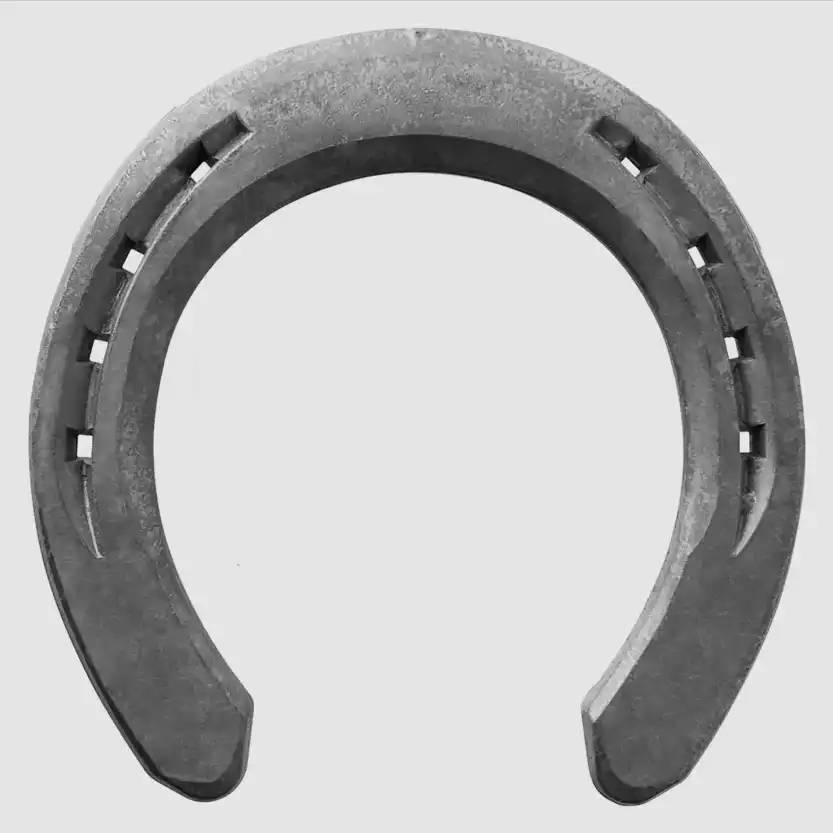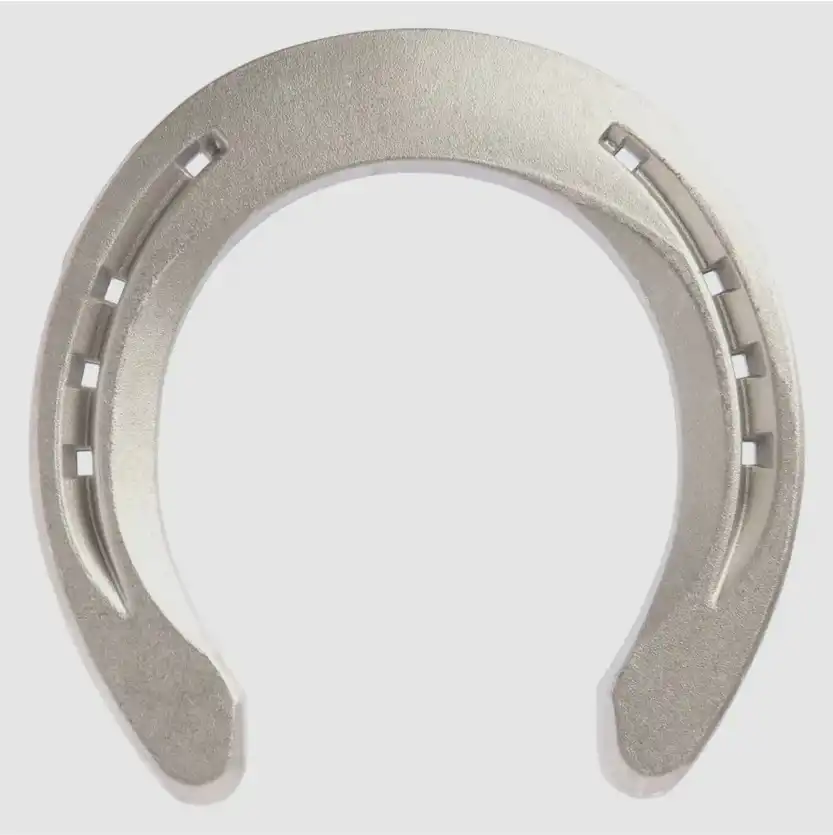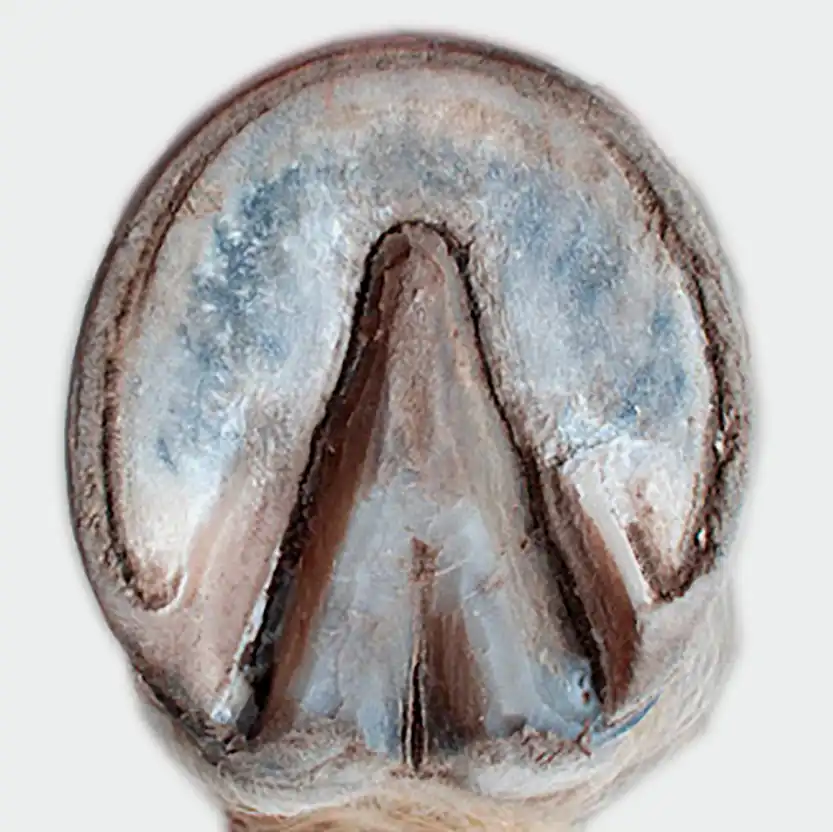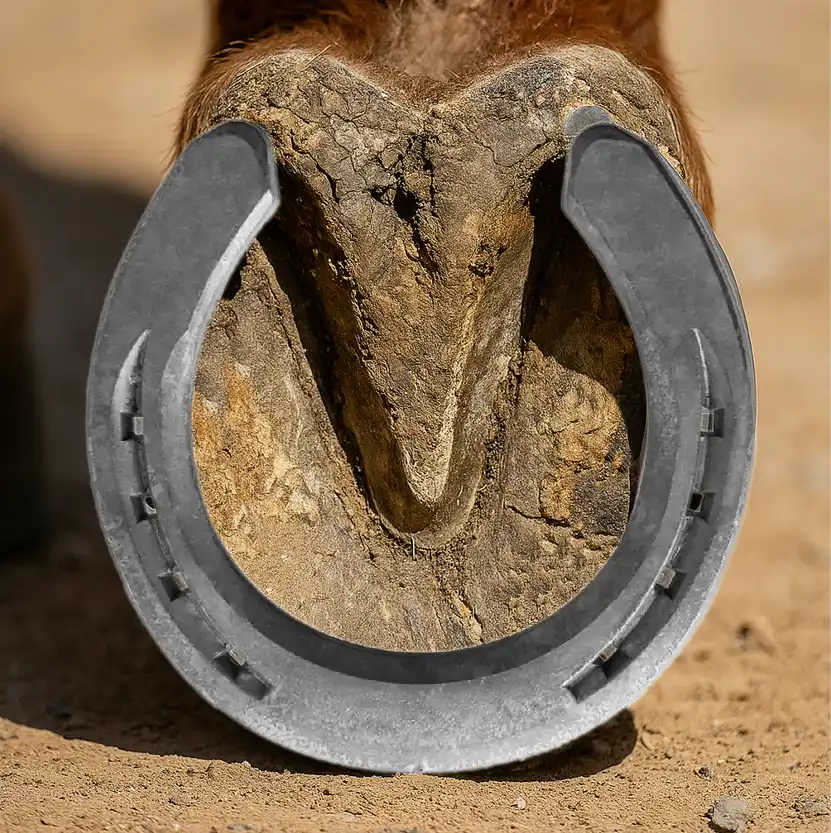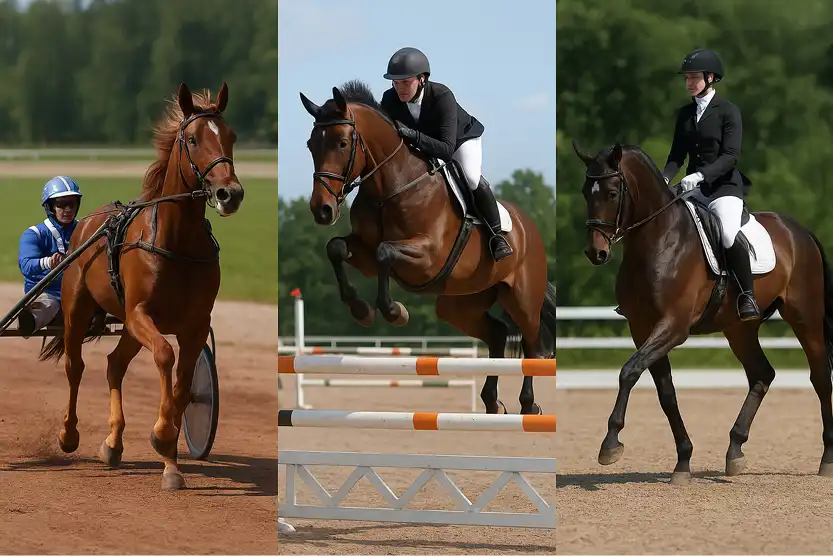Steel Horseshoes vs. Aluminum vs. Barefoot – A Comparison
Choosing the right type of hoof protection is a crucial decision that significantly affects both the health and performance of the horse. Whether steel horseshoes, aluminum horseshoes, or going barefoot – each option comes with its own strengths and weaknesses.
Steel Horseshoes
Advantages
- Durability – very robust and resistant, even under heavy use on hard ground.
- Protection – excellent protection against wear and injuries, especially during intense work.
- Availability – widely used, available in many shapes, and highly customizable.
Disadvantages
- Weight – heavier than aluminum, may slightly restrict mobility and increase energy expenditure.
Aluminum Horseshoes
Advantages
- Lightweight – significantly lighter than steel, enhances mobility and reduces fatigue.
- Shock absorption – improves comfort on hard surfaces.
Disadvantages
- Lower durability – wears down faster and bends more easily.
- Higher cost – usually more expensive than steel.
- Limitations – less suitable for very rough ground..
Barefoot
Advantages
- Natural hoof health – supports the hoof’s structure and function.
- Improved circulation – promotes blood flow within the hoof.
- Gentle wear – suitable for soft ground or low levels of strain.
Disadvantages
- Less protection – more vulnerable on rocky or hard terrain.
- Transition period – adaptation may take several months.
- Hidden costs – hoof boots or glue-on shoes are expensive and need regular replacement; over the course of a year, often not cheaper than shoeing.
The Weight of Horseshoes
Heavier horseshoes are often more advantageous than lighter ones. Many horses tend to move too little rather than too much, so the additional energy expenditure from a bit more weight on the hoof sole can have positive effects. In addition, thicker shoes (e.g., 10 mm) wear down more slowly and can therefore stay on the hoof longer – especially in winter, when hoof growth is slower.
Heavier shoes are also deliberately used in training: the extra weight can activate movement and build strength in the horse. In competition, switching to lighter shoes often results in more expression and suppleness in movement. Very light shoes are only practical at the highest performance levels – for example, when every second counts on a show jumping course, or when a small energy boost is needed for the final jump over 1.60 m.
Nevertheless, shoes should never stay on too long: more than eight weeks is not recommended. Due to the hoof mechanism, the heels wear down faster than the toe, which disrupts the hoof’s balance. Regular shoeing or balancing is therefore essential to maintain correct hoof angles and proper alignment with the joints.
After just three weeks, daily use can sometimes wear horseshoes down to half their original thickness – a clear reminder of how important regular checks are!
Weight on the Hoof – Impact on Performance
Horseshoes add extra weight: steel up to 500 g, aluminum about 100 g. More weight on the limbs requires additional energy and influences movement.
For sport horses, this plays an important role: in dressage, it can reduce suppleness; in show jumping, lighter shoes allow for more efficient push-off; in eventing, added weight can cause quicker fatigue; in racing, every gram counts. Soles and fillers can provide cushioning and support, but also increase weight. Choosing the right shoeing is always a balance between protection and performance.
Sporting Relevance
- Harness racing: Many horses run barefoot as they move more freely without shoes.
- Show jumping: Even at the highest levels, barefoot horses are now competing successfully.
- Large, powerful sport horses: For them, the protection provided by shoes often outweighs the negative effects of extra weight.
Health Aspects
Additional weight on the hoof stresses tendons, ligaments, and joints. Horses with pre-existing issues (e.g., suspensory ligament or navicular problems) particularly benefit from lighter shoes or going barefoot – provided they are suitable for it.
Impact on the Farriery Profession
The barefoot trend does not replace the farrier’s profession. Even barefoot horses require regular, skilled trimming. Rather, the trade is evolving: from traditional shoeing towards specialized hoof care, consulting, and adaptation.
Conclusion
The choice between steel, aluminum, or barefoot largely depends on the area of use, hoof quality, and the horse’s individual needs:
- Steel provides maximum robustness and protection.
- Aluminum combines lightness with comfort.
- Barefoot promotes natural hoof health but requires careful management and can be cost-intensive.
Key takeaway: The weight on the hoof is not a minor detail – it is a decisive factor for performance, health, and longevity in equestrian sports.

